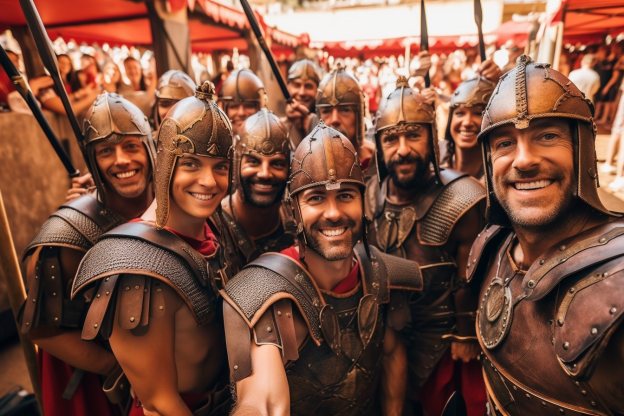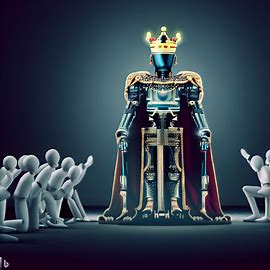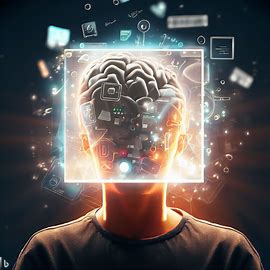Alright, folks, buckle up because we’re about to take a wild ride into the world of AI generative art! With recent developments in AI technology, it’s safe to assume that, soon enough, AI will become a necessary tool in all professional fields, including art, music and creative writing.
If you enjoy memes like I do, then you are probably seeing some mind-blowing AI-generated memes popping up all over social media, and it’s getting harder to tell what is real and what has come from these advanced art machines. From the pope sporting a killer outfit, to surreal landscapes and uncanny portraits, these images left many of us scratching our heads and wondering just how they were created.
Well, wonder no more, because today we’re going to delve into the world of AI image generators and demystify their functionalities and limitations while exploring how they are going to change the artistic world, just as AI is slowly changing social media. With three main picture generating tools out there, it can be overwhelming to know where to start. But fear not, my friends, because I’ve taken the liberty of using these tools to bring you the inside scoop.
So get ready to learn how to enter a text-based prompt and receive a series of relevant images through machine learning programs that learn from related images on the internet. Each tool has its own unique features, and by the end of this guide, you’ll be equipped with the knowledge and confidence to start exploring the possibilities of this exciting technology. Let’s get started!
Craiyon
Many of us were first introduced to the 2022 generative image trend through a tool called Craiyon, formerly known as DALL-E Mini. Boris Dayma developed the low-level art generation tool in a competition for Google. Craiyon was released in april 2022 and opened its services to anyone with an internet connection without any need to make an account or input personal information.
The output time for the nine AI-generated image thumbnails is reasonable at around two minutes, and users should take note that their prompt results are not saved to any system. To save the results, users need to take a screenshot before exiting.
The generative images produced by Craiyon have a dreamy and fluid quality that appeals to fans of weirdcore. However, the AI model struggles with rendering human figures and faces, resulting in portraits and appendages that are uncomfortably warped beyond the uncanny valley. Dayma and his team have put out a disclaimer that Craiyon may unintentionally produce content that affirms harmful societal stereotypes.
To keep the project afloat, Dayma relies on advertising and donations since Craiyon is totally free and accessible to the public. Prompt-engineering using descriptive keywords can help to curate a more detailed or specific result, but it is consistent across all accessible AI image generators. Anyone can use Craiyon by visiting craiyon.com.

DALL-E 2 from OpenAI
OpenAI’s latest AI image generator, DALL-E 2, named after Salvador Dali and Pixar’s “Wall-E,” was released in beta testing on July 20, 2022, following extensive research on ethical use and necessary precautions. Users had to join a waitlist to participate.
However, as of September 20, OpenAI has eliminated the waitlist, and interested users can sign up using their email and phone number. For the first month, users are granted 50 free credits that expire if unused, and 15 additional credits are awarded monthly. Additional credits can be purchased in increments of 115, starting at $15.
DALL-E 2 has a more sophisticated user experience than Craiyon, with each prompt generating four high-quality images. DALL-E 2 saves the 50 most recent image generations under “My Collection” in users’ accounts, making it convenient for users.
While DALL-E 2 handles anatomy and faces better than Craiyon, it’s still hit or miss on occasion. The tool produces high quality images from abstract art to highly stylized art forms and hyper-realistic pictures from any selected field throughout art history. With DALL-E 2, users can get remarkable results from prompts about anything. You can try out DALL-E 2 right now.
Midjourney
DALL-E 2 has a serious contender in Midjourney, an independent AI research lab founded by David Holz of Leap Motion. Unlike other image generation tools, Midjourney operates entirely through Discord, offering 25 free image generation passes to new users. However, these free passes can only be used in semi-public chatrooms, with private messaging reserved for paying users only. Despite this, some users have shamelessly shared their fetish art in public chats.
Midjourney’s generative image quality is on par with that of DALL-E 2, and it has some unique functions that give it an edge, such as the ability to dictate aspect ratios for images of different scales. The tool’s aesthetic quality leans heavily into photorealistic digital illustration, making it perfect for editorial and design work with an almost Simon Stlenhag-esque style to its output. Users can edit their generated images or create mash-ups of any of the previously generated images, which makes for a very powerful tool.
Exploring Midjourney’s capabilities could easily be the subject of a dissertation. If you’re interested in trying it out, log into your Discord account and head over to midjourney.com to join the beta. It’s a handy tool that can help you achieve results that were once only possible in high tech design or animation studios. Below is a picture that was generated by this awesome tool in less that one minute

That looks like a genuine selfie a legion might have snapped before cameras even existed some 2000 years ago, that’s how good Midjourney is. Follow this link to join the Midjourney discord and start generating pictures for free.
These image generating tools have revolutionized content creation and ideation for millions of people, even those without artistic education or talent. And even though they are not yet perfect, they have perfectly started replacing creative artists, and soon enough, everyone with a computer will be capable of outperforming even the most seasoned of artists who still believe in human superiority.
While they have their limitations, they have certainly leveled the playing field. However, one thing they cannot handle is text, which means that human hands are still the reigning champions in this regard. Nevertheless, it is exciting to see how technology continues to evolve, and except for millions losing their jobs to machines, who knows what the future holds for content creation and ideation? I will be your guide through this AI revolution, so stick around for more updates on how to stay ahead of the machines.




Leave a Reply